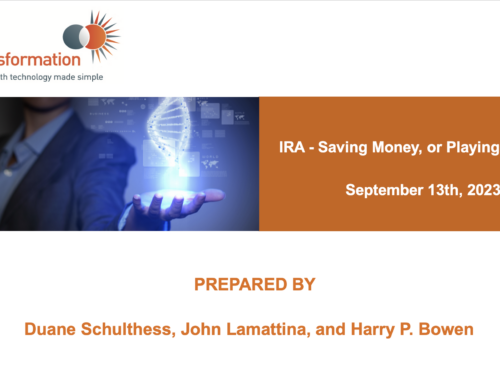by Gary Finnegan
Patients can bring unique insights to the medicines approval process. But how can regulators use patient preferences to inform decisions on innovative medicines?
‘Patients know best what kind of impact new treatments would have on their daily lives. Members of scientific committees don’t have that experience, and clinical trials hardly capture this complexity, so patient input is vital,’ says Yann le Cam, Chief Executive Officer of EURORDIS, the voice of patients with rare diseases in Europe.
Le Cam was speaking during a webinar entitled The Patient’s Understanding of Benefit Risk, where stakeholders addressed the growing need to take heed of patients’ views on what constitutes acceptable levels of risk. The live event hosted by Vital Transformation was first broadcast on June 11 but a recording can be viewed online.
The discussion is timely. The regulatory environment has been adjusting to changes in medical research which have seen a shift away from the traditional model of targeting large patient populations with small-molecule medicines. Many new therapies are larger biomolecules used to treat closely defined patient cohorts.
This frequently means that large double-blind randomised control trials may no longer be the most suitable way to assess all medicines, while the definition of acceptable levels of drug-related risk has blurred – especially for patients with serious illnesses.
Regulators have had to become more flexible, says Le Cam. Evidence generation is becoming a continuum, especially for rare diseases where small patient populations mean post-marketing data collection is an important part of the process for new medicines.
‘It’s not an on-off switch – evidence generation does not end after marketing authorisation,’ he says, noting that this means tolerating higher levels of uncertainty at the time of approval.
In response to these changes, regulators in Europe and the US have been working to factor the views of patients into their decision-making. Patient representatives are already feeding into clinical trial design (for example, selecting surrogate endpoints) and benefit assessment at the European Medicines Agency (EMA).
A more nuanced approach to risk assessment
The advent of ‘adaptive licensing’ which grants conditional authorisation with post-marketing safety and efficacy studies is good news for patients who are crying out for new medicines and are often more risk-tolerant than might have been presumed in the past. A more nuanced approach to defining drug safety is emerging which recognises the vastly different risk thresholds that might be acceptable to a patient with a debilitating life-limiting disease compared to a pregnant women with temporary nausea.
Alastair Kent, Director of the Genetic Alliance (UK) said the role of patient representatives would become increasingly important. ‘The question is how we capture those views in a way that satisfies regulators, gives consistent messages to the industry, academia and clinical communities, and maintains the flow of new products for patients living with unmet medical need.’
There have been efforts to address this question on both sides of the Atlantic. Pat Furlong, Founding President and CEO of the Parent Project Muscular Dystrophy (PPMD), repeatedly stresses to regulators that risk tolerance is different for patients with rare diseases. ‘The FDA said it agrees that patient representatives are best equipped to appreciate subtle improvements that a novel compound could make to their quality of life. But they need hard data, not just anecdotes.’
‘Show me the data’
Ms Furlong’s organisation surveyed patients and their families to assess what they want from a new treatment, what side effects they worry about, and what trade-offs they would make in exchange for longer lifespans or slower disease progression. ‘Parents of patients with progressive, debilitating, life-limiting conditions are willing to make trade-offs if their child could live longer, move for longer or walk for longer,’ she said.
The EMA has also been exploring methods of harnessing this kind of feedback. Andrea Beyer, National Expert in Benefit Risk Assessment, says the Agency wants to turn patient sentiment into hard data. It has been running a project to measure the preferences of multiple sclerosis patients. The project has collected qualitative data through a survey which is backed up by a sophisticated algorithm that translates patient responses into qualitative scores. This information can then be used to build a treatment decision model.
The survey examined how patients weight treatment outcomes such as ‘number of relapses’, ‘time to disease progression’, and ‘disability’, as well as a range of adverse events. ‘Using data from patients we can give a total score to show which treatment is most acceptable to patients. We are looking at the feasibility of building these models to determine what treatment is preferred and where to people place the most weight,’ she says.
Low scientific literacy
While some patient groups become very knowledgeable of the regulatory process, it remains completely alien to most patients. Dr Donald Singer, Secretary of the European Association of Clinical Pharmacology and Therapeutics, noted that research suggests the public does not understand medical research or statistics very well. For example, surveys have shown that many people do not know that 3/10 is bigger than 5/100 and patients rarely absorb much of the information shared during a medical consultation.
In addition, media reports frequently conflate absolute risk with relative risk, further confusion public understanding. ‘We might think we are explaining simple concepts but numeracy can be very poor,’ he said.
This suggests considerable work must be done to communicate with patients and the general public about benefit and risk. That may be a challenge for busy health professionals who are ‘time poor’ and not well trained in communicating risk.
Dr Singer said communication tools such as Tornado Displays can be used to communicate the value people place on various factors in the benefit-risk equation. These graphs show weighted scores for several criteria and are a useful visual representation of patient preferences.
Unanswered questions
Patient groups and health professionals need to communicate these uncertainties to patients in tandem with improved dialogue between advocates and regulators, according to several speakers at the webinar. Parallel conversations should take place between patients, doctors, insurers and the EMA to ensure that patient input is heard and heeded. The evolution of the medicines regulatory process is under way but a long road may lie ahead.
The willingness of regulators to listen to patients – and the desire of patient representatives to be heard – does not mean a simple solution is in sight. Thorny issues remain such as the implications for health insurance and the risk of litigation. Would an individual affected by an adverse event which was considered by a patient representative to be ‘tolerable’ be surprised to learn that the bar for drug safety had been lowered for their particular illness? And what authority do ‘patient representatives’ carry anyway?
There are also some who will question whether allowing patients – who may be vulnerable and are certainly biased – to influence decisions will give more robust outcomes than handing the task exclusively to independent experts well versed in the scientific method. To this, Yann le Cam says:
‘Patients may not understand statistics but they understand the disease.’
This webinar was supported by:
 |
 |




